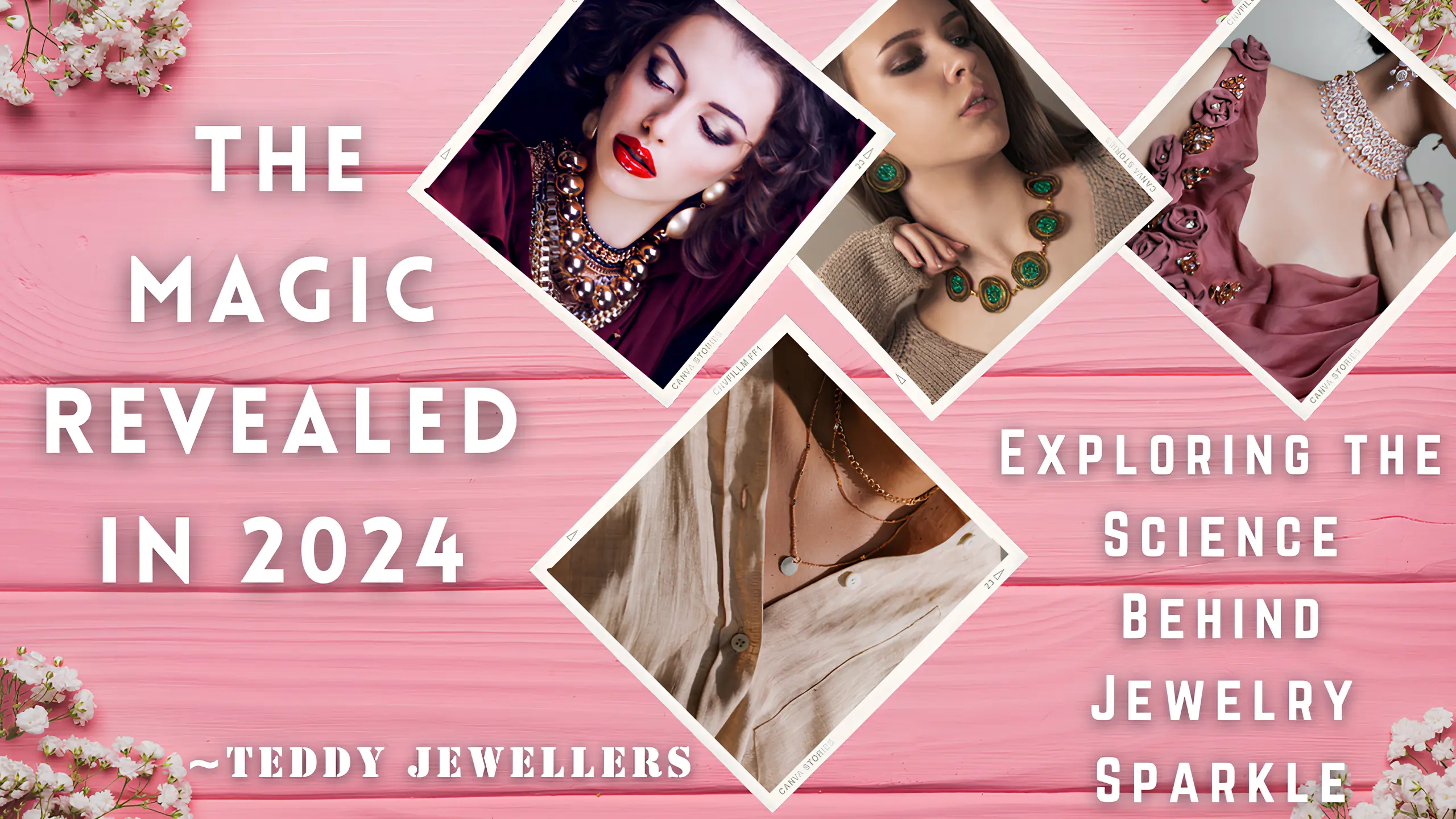Dive into the fascinating world of jewelry sparkle and uncover the scientific secrets behind its allure. From the physics of light reflection to the brilliance of gemstones, discover how different factors contribute to the mesmerizing sparkle of jewelry. Explore the role of refractive index, light interaction, and gemstone properties in creating that coveted shimmer. Gain a deeper appreciation for the science behind the sparkle and enhance your understanding of jewelry’s enchanting allure.
Jewelry has fascinated humans for centuries, not only because of its aesthetic appeal but also due to its mesmerizing sparkle. Have you ever wondered why certain pieces of jewelry catch the light just right, dazzling anyone who sees them? The secret lies in the science behind the sparkle. In this blog post, we’ll delve into the fascinating world of jewelry sparkle, uncovering the scientific principles that create that magical shimmer.
The Physics of Light Reflection in Jewelry
To understand why jewelry sparkles, we need to start with the basics of light reflection. When light hits a surface, it can either be absorbed, transmitted, or reflected. The sparkle of jewelry is primarily due to the reflection and refraction of light.
Key Factors in Light Reflection

- Surface Quality: Polished surfaces reflect light more efficiently.
- Angle of Incidence: The angle at which light hits the jewelry affects how it is reflected.
- Material Properties: Different materials have unique reflective qualities.
Reflection and Refraction

Jewelry sparkle is significantly influenced by reflection and refraction. When light enters a gemstone, it slows down and bends. This bending is called refraction. The light is then reflected within the gemstone before it exits, creating the sparkle we see.
The Role of Refractive Index
The refractive index of a gemstone is a measure of how much it bends light. Gemstones with higher refractive indices, like diamonds, bend light more and therefore have a greater sparkle.
Examples of Refractive Indices
- Diamond: 2.42
- Ruby and Sapphire: 1.76-1.77
- Emerald: 1.56-1.60
The higher the refractive index, the more brilliant the gemstone will appear. This is why diamonds are so prized for their sparkle.
Understanding Gemstone Brilliance
Brilliance refers to the amount of white light reflected from the surface and interior of a gemstone. It is influenced by both the refractive index and the cut of the gemstone.
The Importance of the Cut
The cut of a gemstone determines how light travels through it. A well-cut gemstone will reflect more light, enhancing its brilliance.
- Brilliant Cut: Maximizes light return and sparkle.
- Step Cut: Emphasizes clarity and color over brilliance.
- Mixed Cut: Combines features of brilliant and step cuts for a balanced sparkle.
Dispersion and Fire
Dispersion is the phenomenon where white light is split into its spectral colors as it passes through a gemstone. This creates the colorful flashes, known as fire, seen in gemstones like diamonds.
How Dispersion Works
- White Light Entry: When white light enters a gemstone, it is bent (refracted).
- Color Separation: Different colors of light bend by different amounts, splitting into a spectrum.
- Exiting Light: As the light exits, it creates a rainbow effect.
The Influence of Light Sources
The type of light source can greatly affect the sparkle of jewelry. Natural sunlight often enhances the sparkle better than artificial light due to its broad spectrum.
Types of Light Sources
- Natural Light: Offers a full spectrum, making gemstones appear more vibrant.
- Artificial Light: Can vary in quality; LED lights are often used to enhance sparkle in displays.
Enhancing Jewelry Sparkle
There are several techniques used to enhance the natural sparkle of jewelry:
Cleaning and Maintenance
Regular cleaning removes dirt and oils that can dull the sparkle.
- Gentle Cleaning: Use a mild soap solution and a soft brush.
- Professional Cleaning: For a deeper clean, consider professional ultrasonic cleaning.
Setting Techniques
The way gemstones are set in jewelry can also enhance their sparkle.
- Prong Setting: Elevates the gemstone, allowing more light to enter.
- Bezel Setting: Encircles the gemstone, offering protection and a modern look, though it might slightly reduce light entry.
FAQs
What is the refractive index and why is it important for jewelry sparkle?
The refractive index measures how much light is bent when entering a gemstone. Higher refractive indices mean greater bending of light, resulting in more sparkle.
How does the cut of a gemstone affect its sparkle?
The cut determines how light travels through the gemstone. Well-cut gemstones reflect more light, enhancing their brilliance and sparkle.
Can the type of light source affect the sparkle of my jewelry?
Yes, natural sunlight usually enhances the sparkle better than artificial light due to its full spectrum. However, high-quality LED lights can also be effective in displaying jewelry sparkle.
Conclusion
The enchanting sparkle of jewelry is a captivating phenomenon grounded in the principles of light reflection, refraction, and dispersion. Understanding these scientific concepts not only deepens our appreciation for these beautiful pieces but also helps us make informed choices when purchasing or caring for jewelry. Whether you’re a jewelry enthusiast or simply curious about the science behind the sparkle, knowing these details will surely enhance your admiration for these timeless treasures.
Teddy Jewellers
For more fascinating insights and high-quality jewelry, visit Teddy Jewellers. Discover our exquisite collection and experience the magic of jewelry sparkle firsthand!
Also Read From “Teddy Jewellers”
| Understanding Market Trends in 2024 | Jewelry Investment Strategies |
| 10 Jewelry Care Tips & Tricks to Keep Your Precious Gems Sparkling Bright | Find Expert Tips Here |
